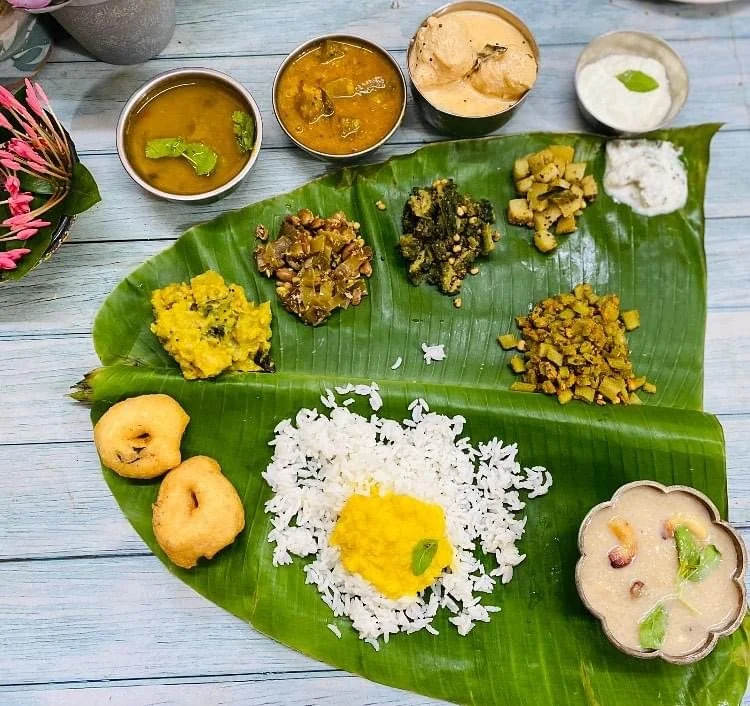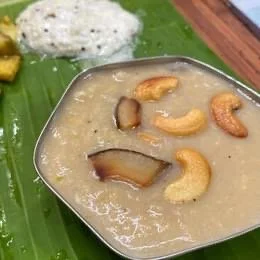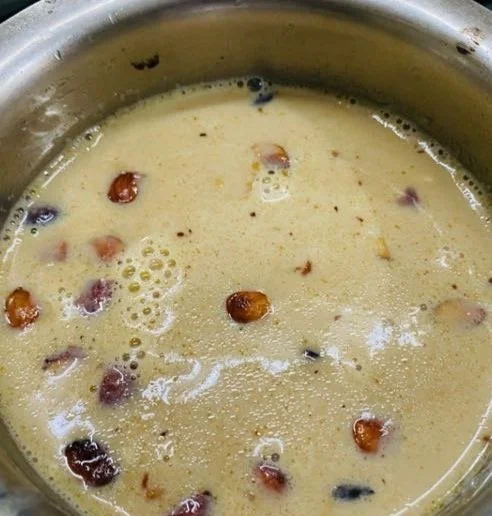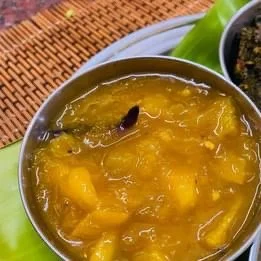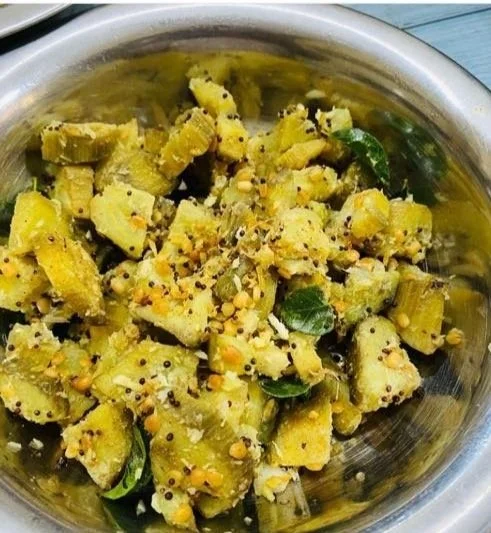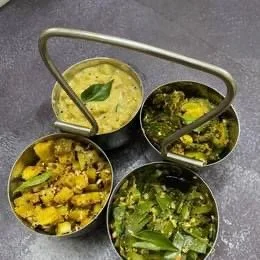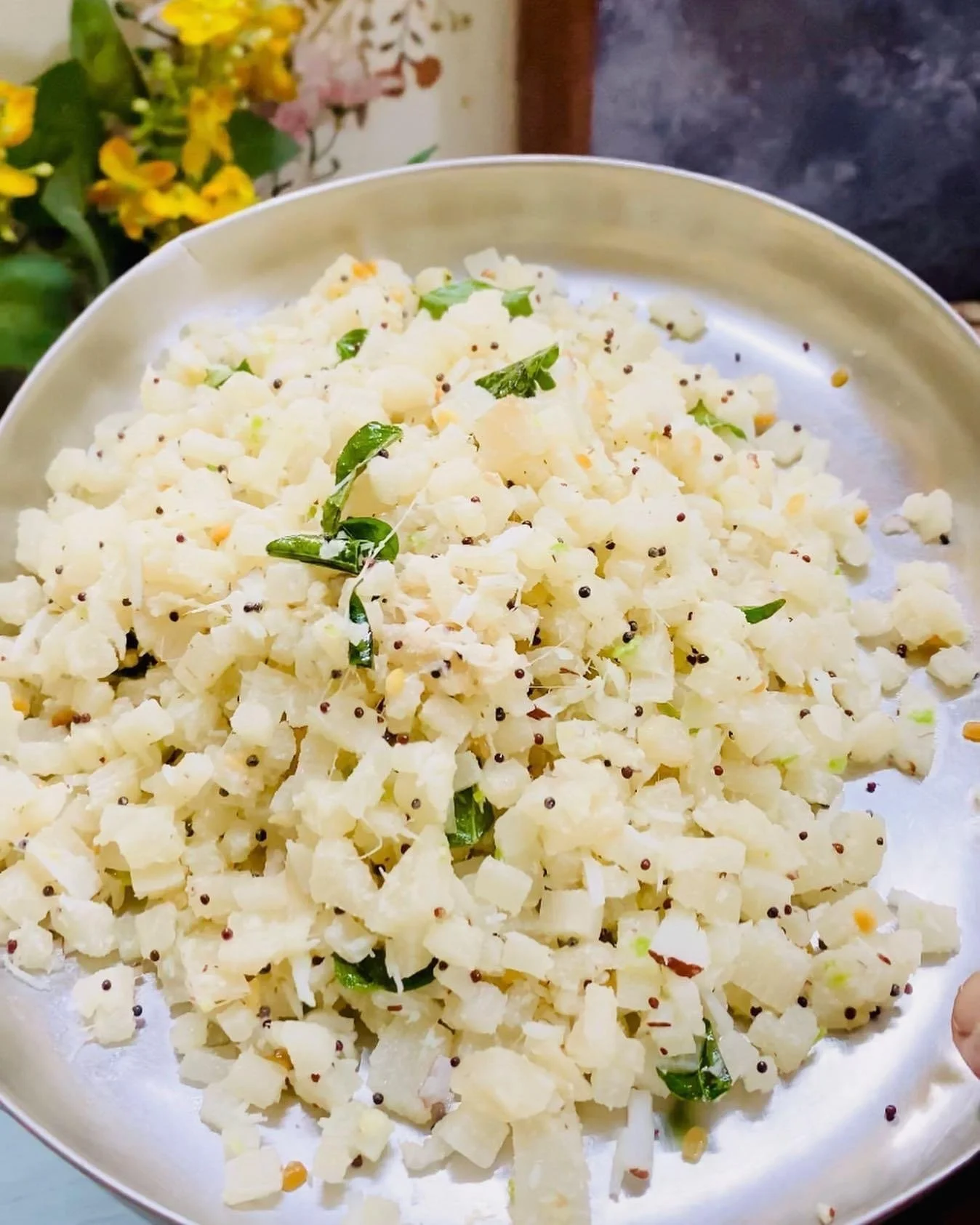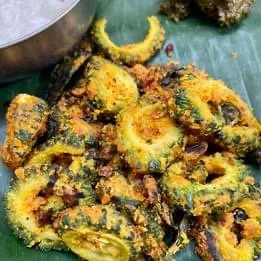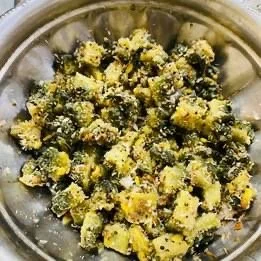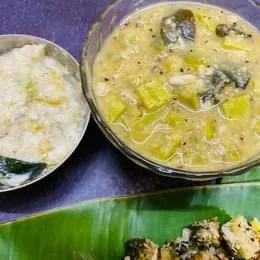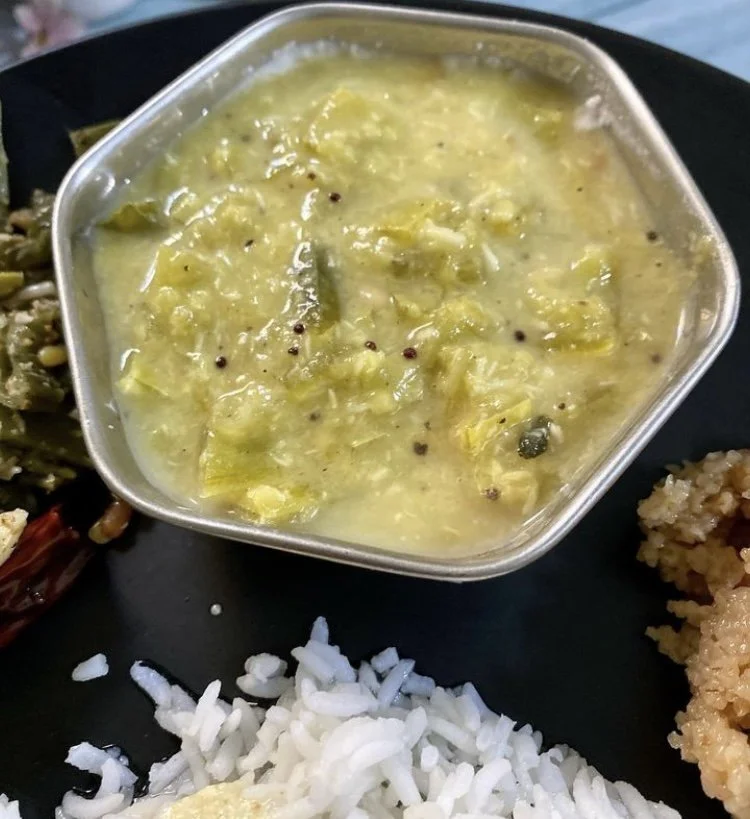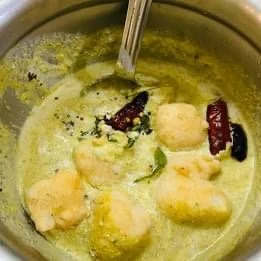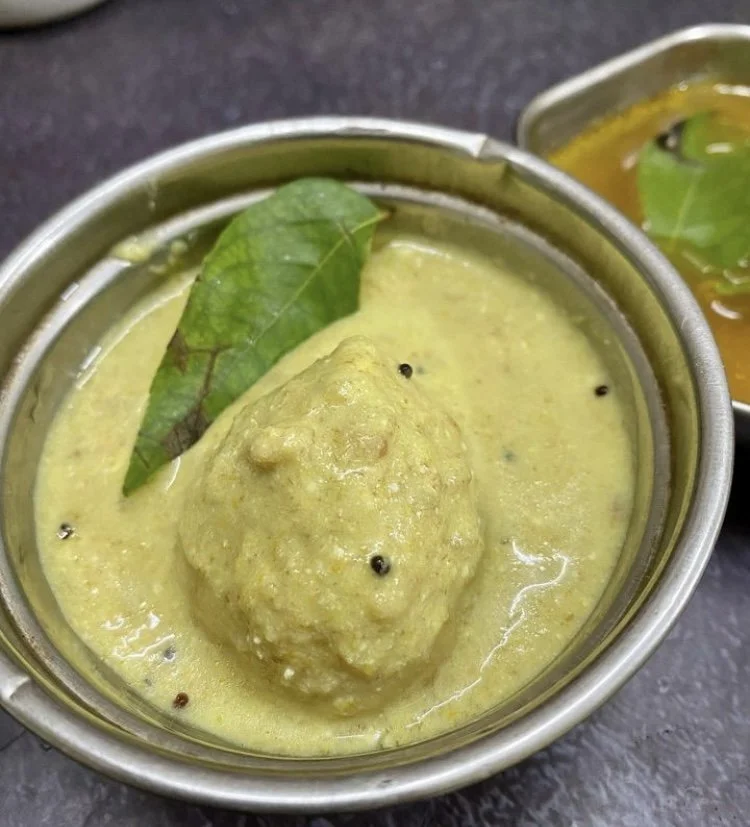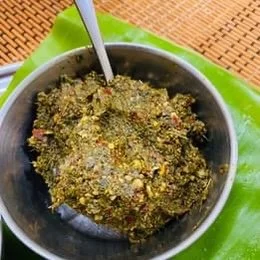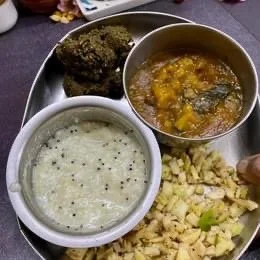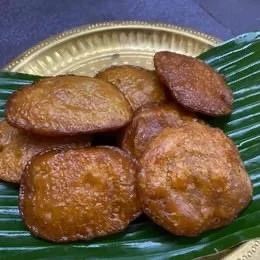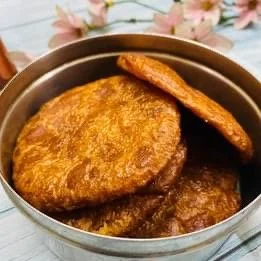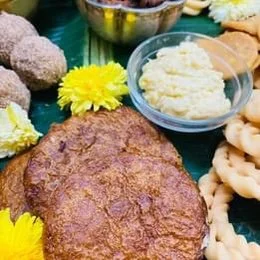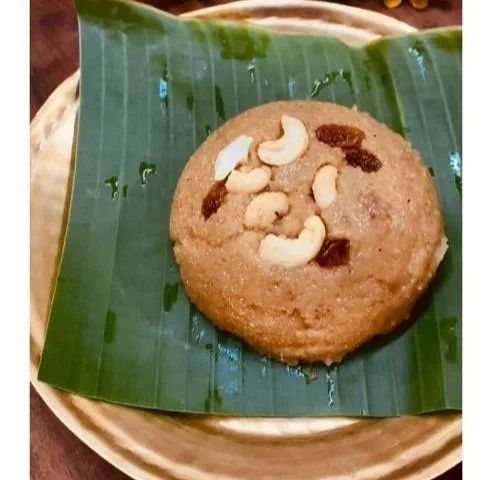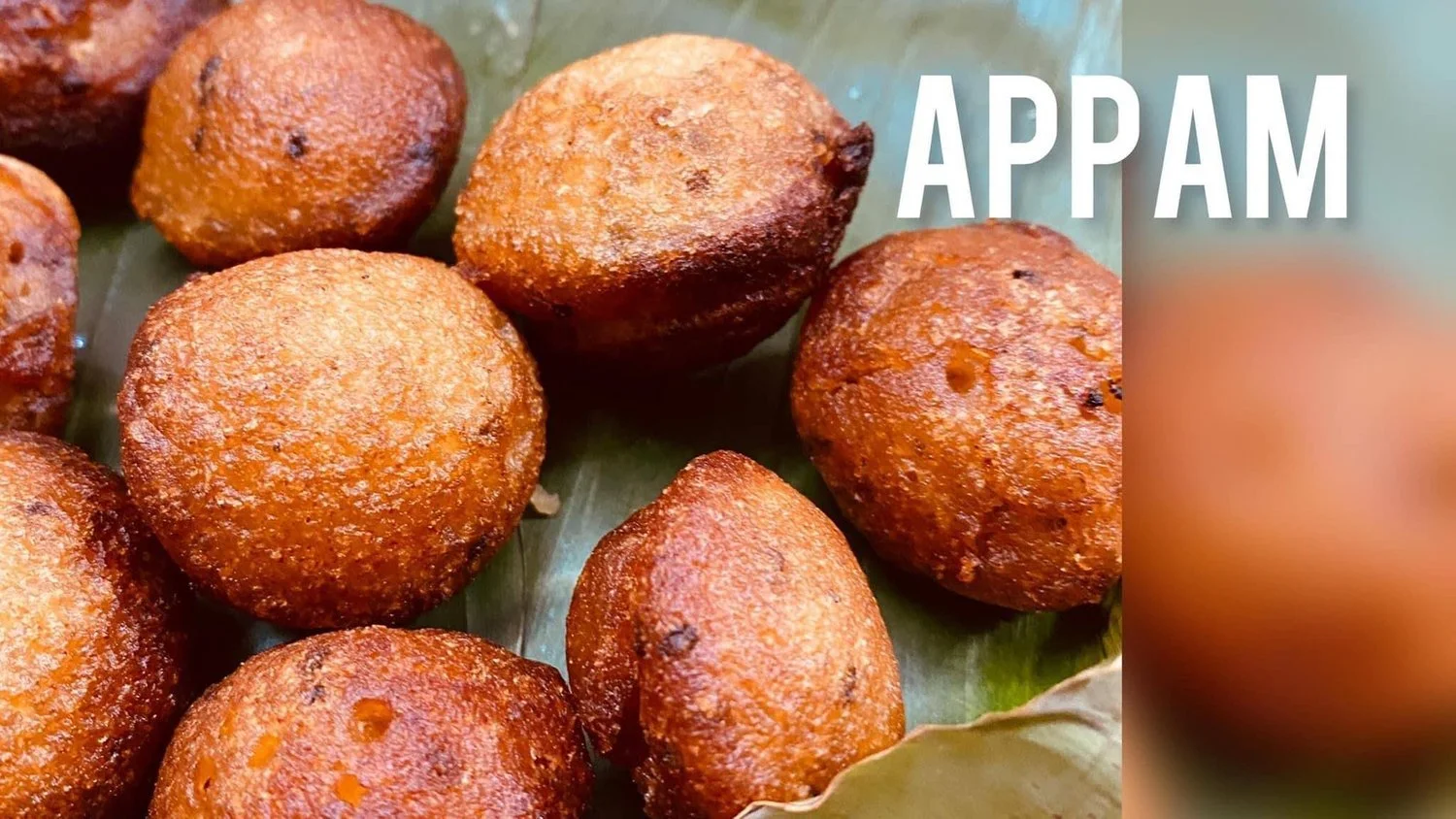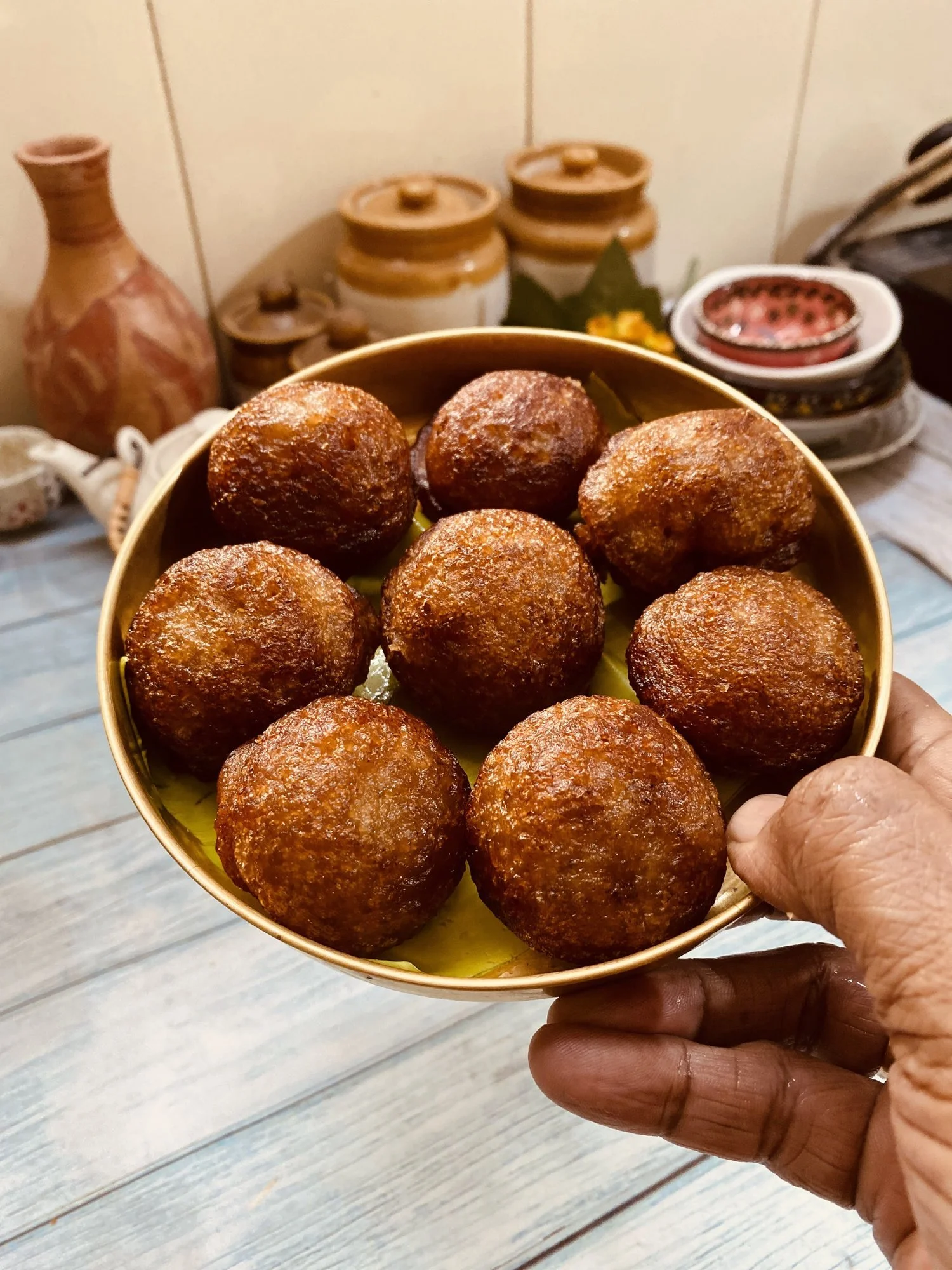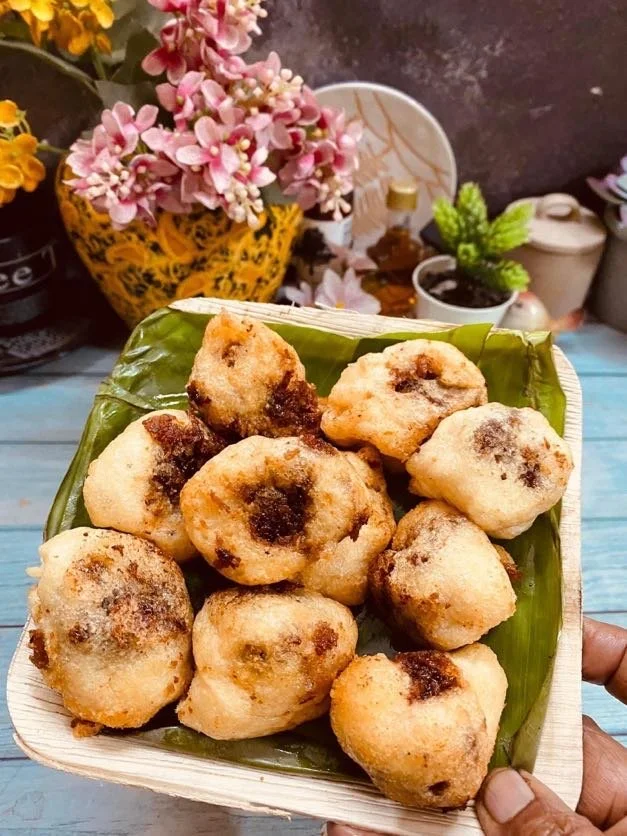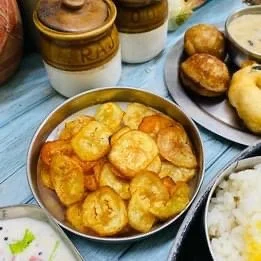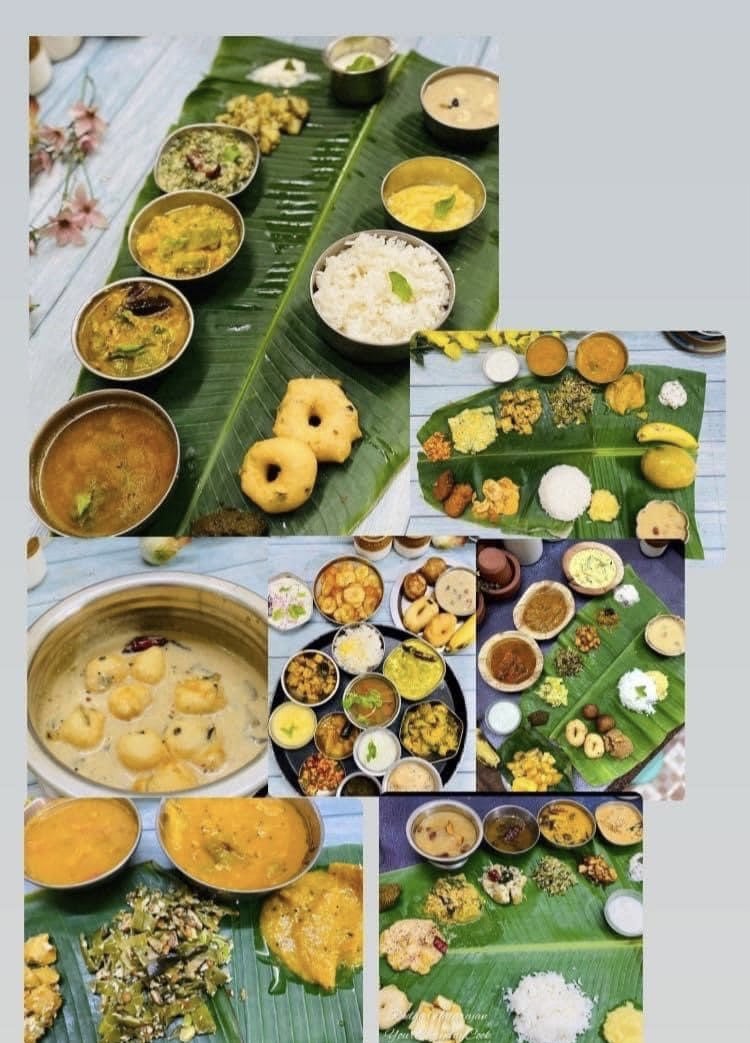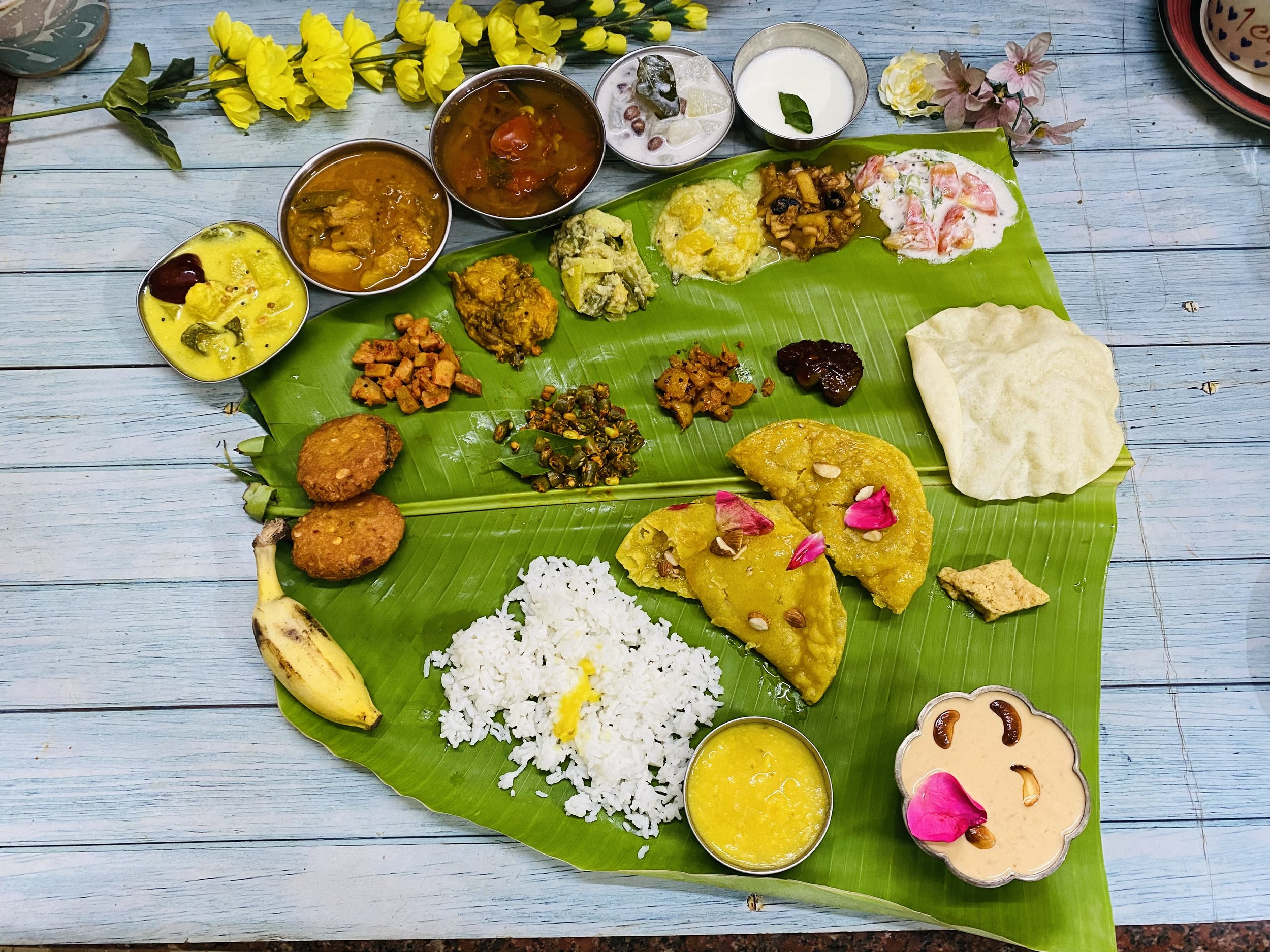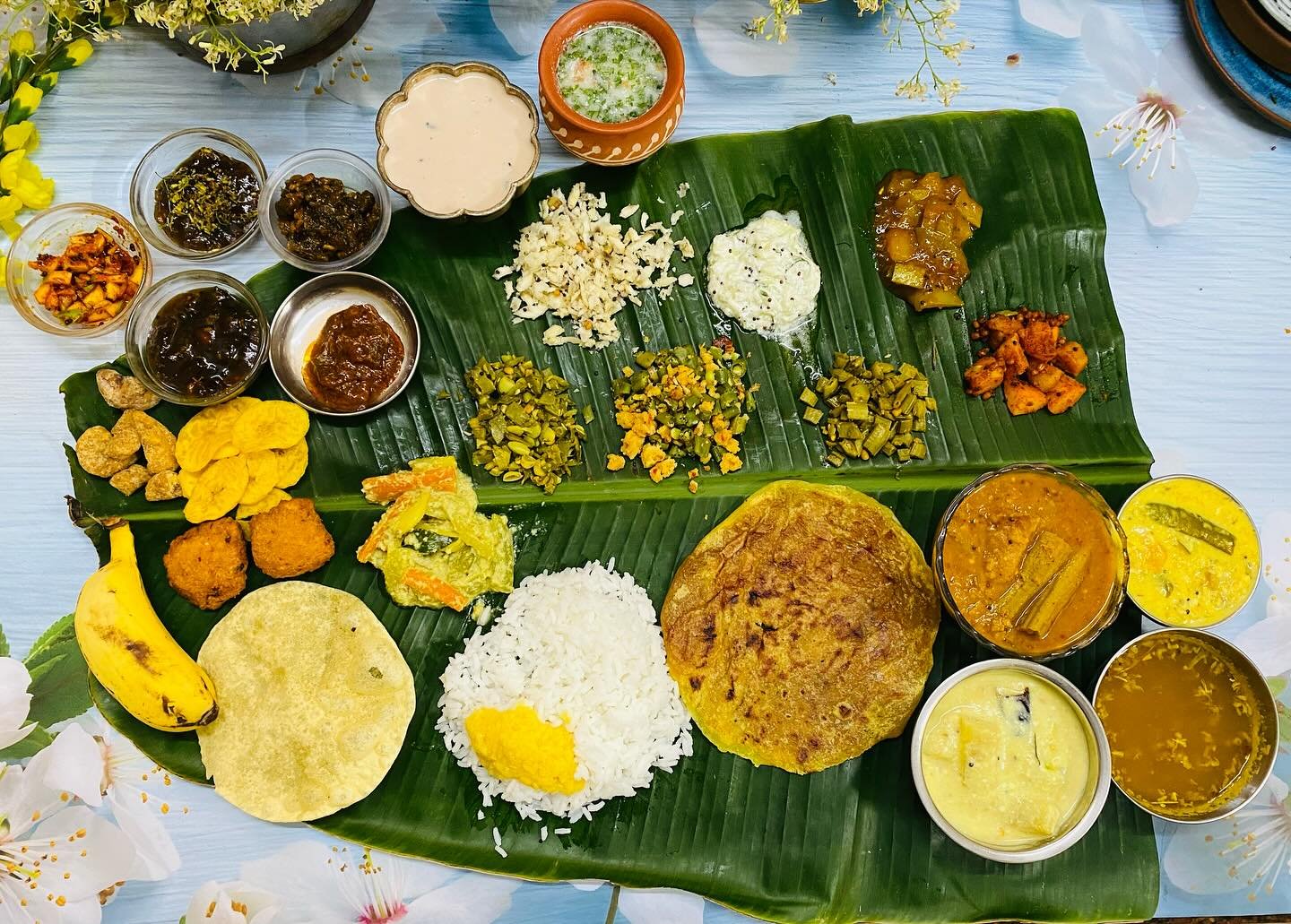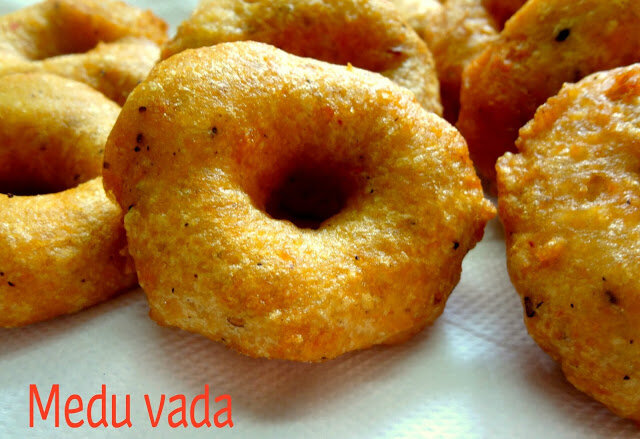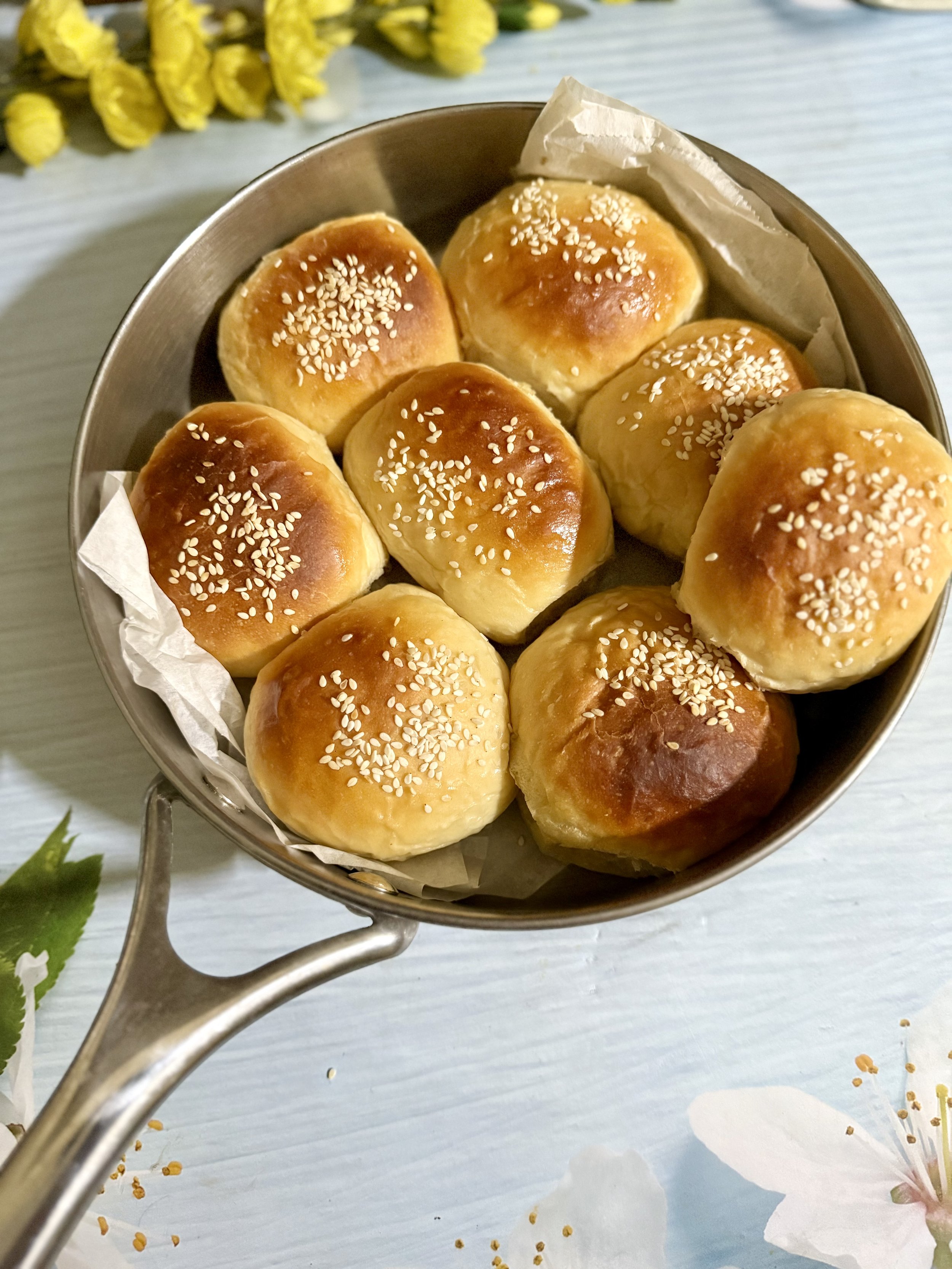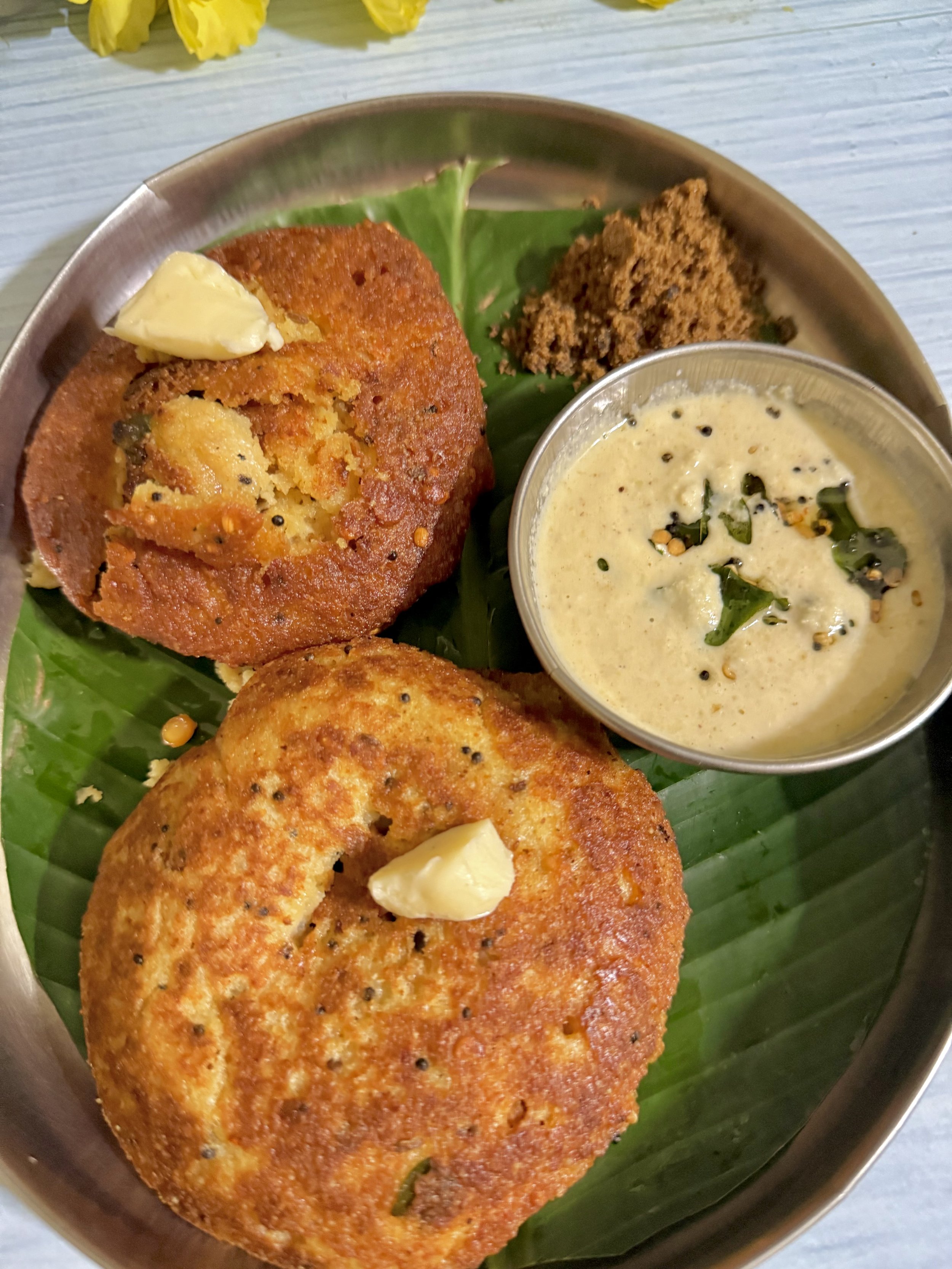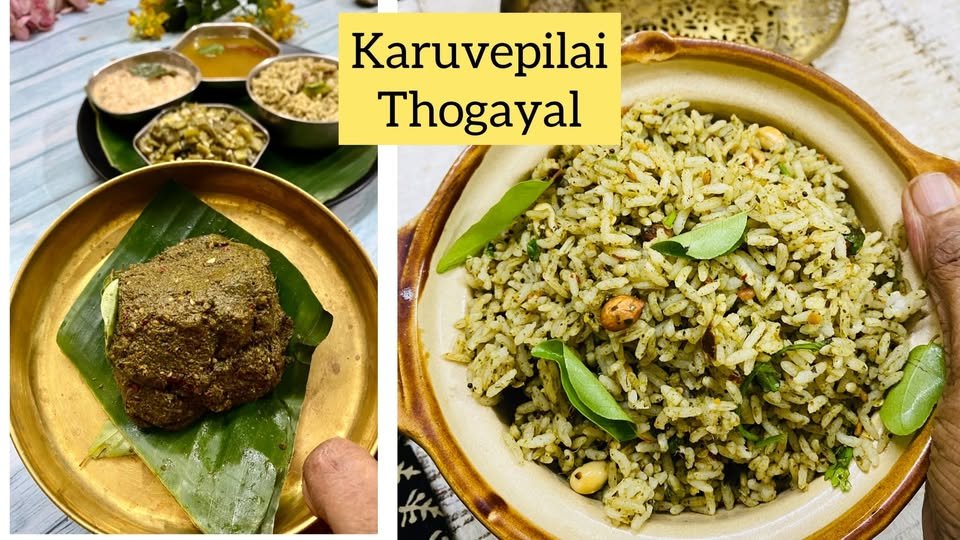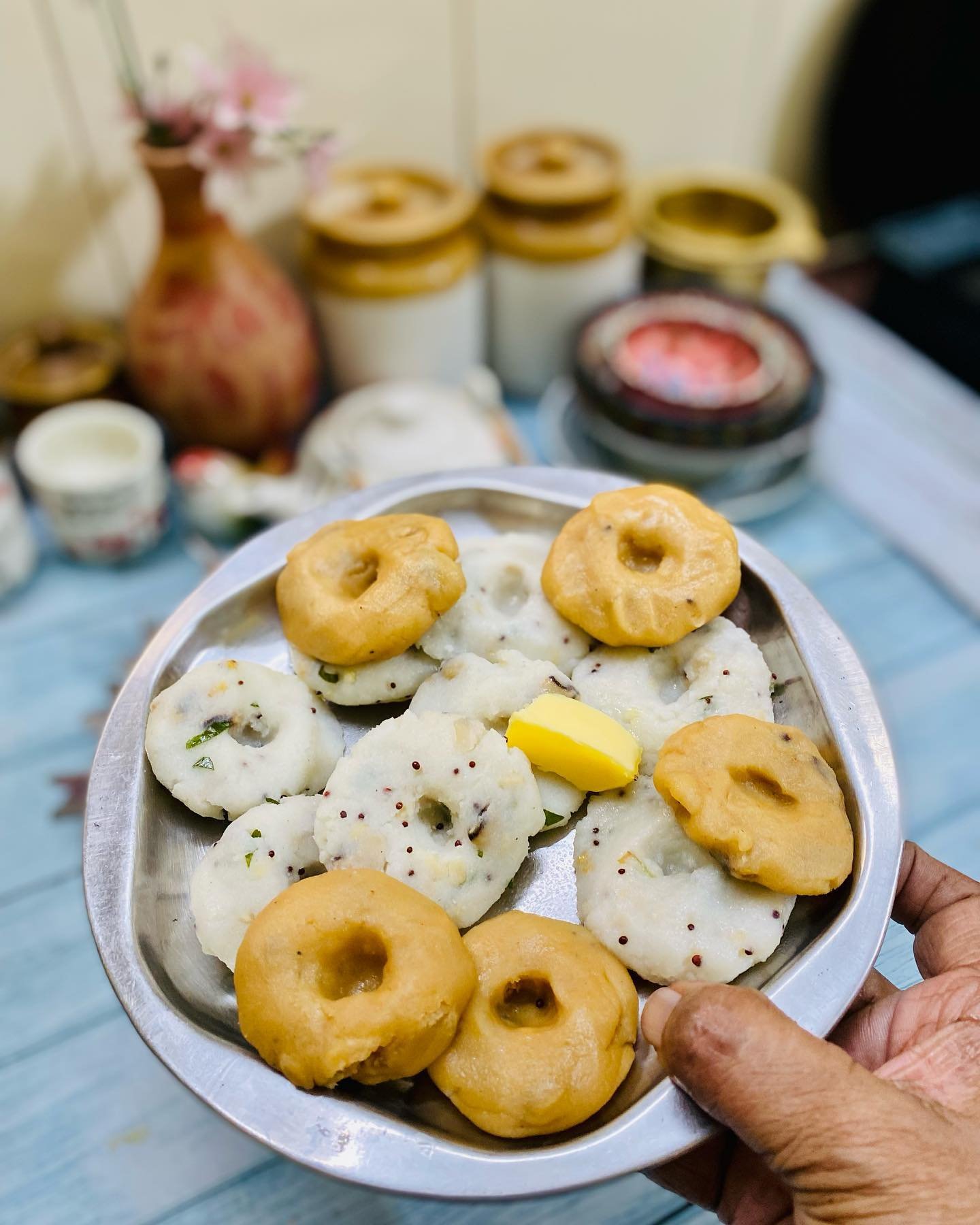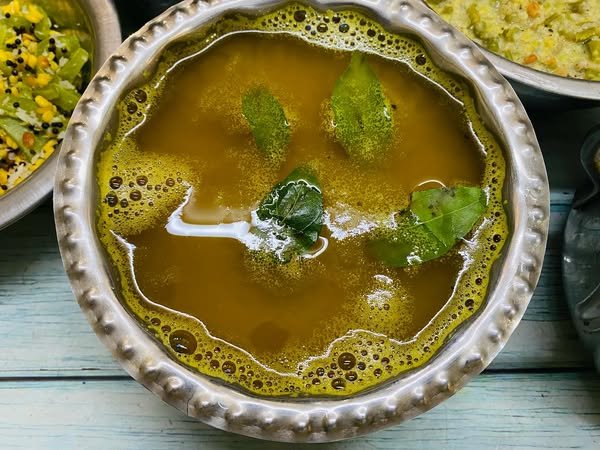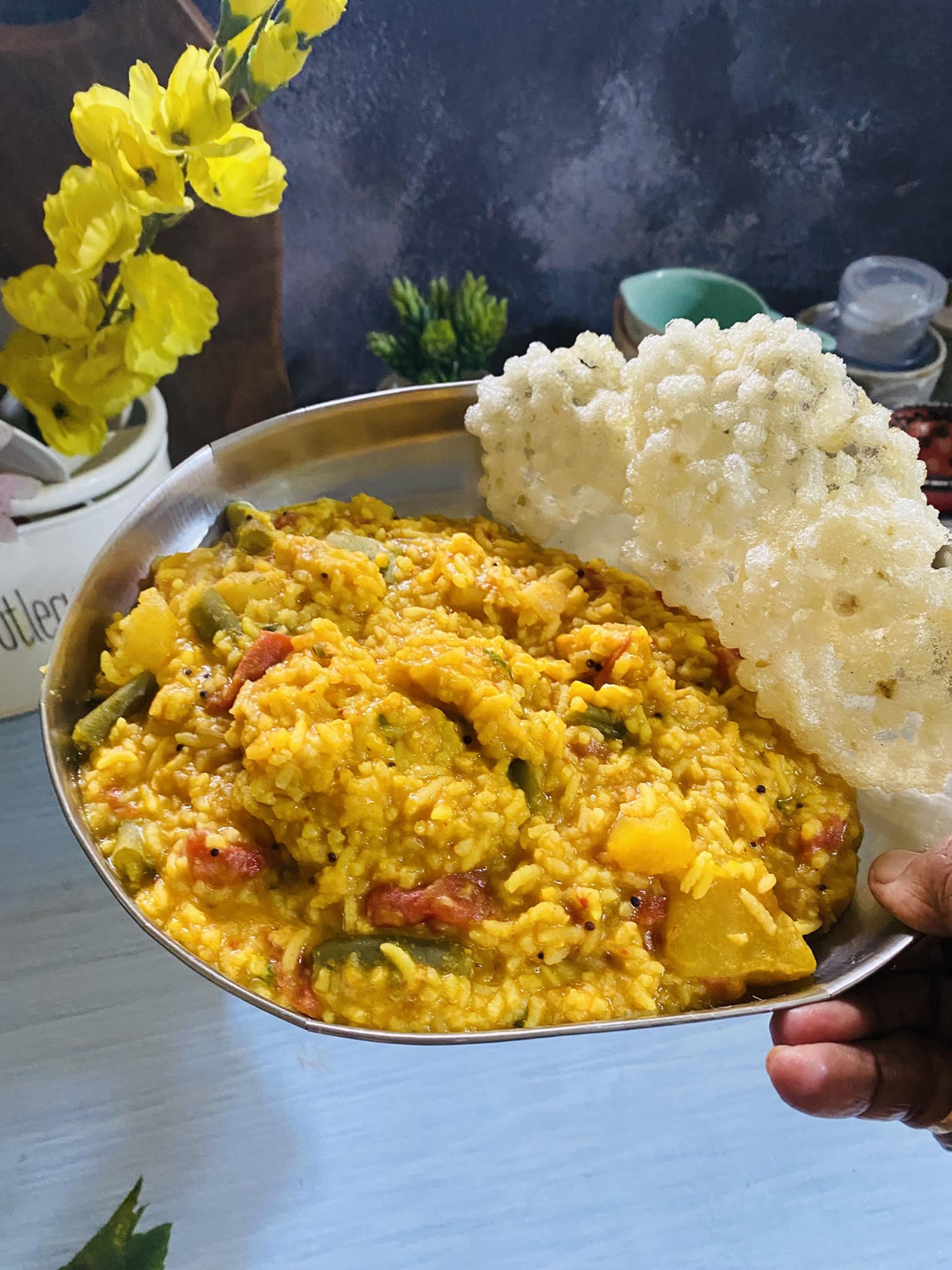Srardham Samayal
srardham samayal
Srardham samayal
Sradha encompasses sincerity, loyalty, or devotion, deriving from the word "shraddha," meaning devotion. Hence, our rituals dedicated to our forefathers should be conducted with "shraddha," indicating attention and sincerity. The term "srardham" is employed by Brahmins who undertake the annual rites for the deceased. Each year, sons fulfill the annual rites for their departed parents. Delving into the intricate details of how srardham is performed is beyond the scope here, given its precision and strict adherence to rules. It is recommended to seek guidance from elders and vadhiyars for accurate instructions.
Central to srardham is the annual meal served to Brahmins and subsequently consumed by family members. Even within families, variations exist regarding the use of certain ingredients. To provide a comprehensive understanding, I am sharing an exhaustive list based on my knowledge and the requirements for the annual rites performed in my household, following the guidelines set by our elders. This discussion is solely focused on cooking-related aspects.
I am giving an exhaustive list of what i know and what i need for our annual rites performed in my house according to rules laid out by he elders. The discussion is totally cooking related .
The following can be used for srardham samayal.
udad dal /Black gram,
black sesame seeds / black Gingelly , wheat, cowpea,
bitter gourd, jack fruit , mango , Pomegranate, Curry leaf, lemon,
Banana fruit, wood apple , gooseberry , grapes, pepper, snake gourd, Kandan Kathiru, honey , ghee, native sugar, Jaggery , rock salt, Cow milk, Yam , colacasia, Jeera , Cardamom, Thoothuvalai, Pirandai, Curd , milk , ghee , plantain stem, are some of the permitted ingredients that can be used for cooking in Sradham.
Coconut , mustard , Bengal gram , ash gourd, wood apple and Chillies. Follow the customs of your house.usually Turmeric , chilies are not used . ( But follow your family customs . )
Fruits, sweet preparations , milk, curd and Ghee there is no sesha. That is even if they are offered to the ancestors the remaining leftover can be used by all others.
In essence, the culinary preparation for srardham remains straightforward despite the multitude of items involved. This simplicity is attributed to a common approach adopted by most women engaged in preparing meals for srardham. Here, I am delineating the method as shared with me by our mami, who used to assist in the cooking process.
We abstain from utilizing pre-made spice powders like rasam podi, sambar podi, chili powder, and often refrain from using pre-ground turmeric in many households, opting instead to pound it from dry turmeric roots.
Hence, our initial step involves crafting a fundamental spice blend known as "curry ma podi" or "kari ma podi," which forms the foundational flavor for all dishes. The recipe for this essential spice blend is provided below.
Basic currry podi ( Karima podi )for srardham
karima podi for srardham samayal
Recipe for the blended spice powder for use on Ammavasai and for Srardham
Prepare in a little bulk quantity as this podi will be useful on other days too , so do not underestimate and run out of the podi during cooking process.
Dry roast
1/3 cup udad dal ,
1 heaped tbsp cumin ,
1 tbsp pepper ,
1 tbsp rice
few curry leaves ,
1/2 cup grated coconut can be roasted and powdered with above but it will have short shelf life though it will be useful during the Mahalayha fortnight and can be used up , saves grinding time also .
It is better to grate coconut and roast and keep it separately to be added as a last garnish for each dish as required .
some families do not use coconut for ammavasai and for srardham so you have to make these changes and skip where mentioned .
Method
Roast all these ingredients until they emanate a fragrant aroma.
Subsequently, finely powder the roasted mixture. This constitutes the sole fundamental spice employed in all Sraradha samayal, be it for Ammavasai or Mahalaya days, and in the preparation of Kari, kootu, sambar, and rasam. Adjust the levels of spice and cumin to suit your taste preferences. Notably, red chilies are omitted, making pepper the primary spice. It's worth noting that minor variations may exist across different families, and the outlined method is our customary approach.
Roast 1 cup coconut till fragrant and brown . Store separately as garnish ) only if your custom allows it , ( our family uses coconut ).
Banana stem/வாழத்தண்டு
Banana blossom/வாழைப்பூ
Raw plantain /வாழக்காய்
Broad beans /அவரக்காய்
sweet potatoes/சக்கரவள்ளி
yam /சேனை
Arbi/ colacassia /சேப்பங்கிழங்கு
Snakegourds /புடலங்காய்
yardlong beans /பயத்தங்காய்
Ginger/இஞ்சி
Gooseberries /amla நெல்லிக்காய்
raw mango/மாங்காய்
ginger/இஞ்சி
pepper/மிளகு
curry leaves /கரிவேப்பிலை
moong dal /பாசிப்பருப்பு
udad dal/உளூந்து
raw rice , including for meals and tiffin
wheat /கோதுமை
jaggery /வெல்லம்.
mango ginger /மாங்கா இஞ்சி
Bittergourds /பாரிக்காய்
பாகற்காய்
To prepare for Davasam :
Overnight :
Peel and dice the vegetables according to your required quantities. Keeping in mind that it's Srardham, be mindful to prepare smaller portions of each variety to avoid leftovers, as they are not intended to be carried forward.
A typical Srardham menu : Just for example
1. Vazhakkai Kari
2. Kothavarangai Kari
3. Podalangai poricha kootu ( sambar is not prepared)
4. Avarakkai Kari
5. Bitter gourd stirfry or fried as chips, bittergourd puli kootu can also be prepared .
6. Milagu rasam
7. Mor Kuzhambu with cucumber or ( usually Bonda will be easy which can be prepared from Ulundh vadai batter )
8. Ulundh vadai
8. Pasi Paruppu payasam
9. Ellu urundai
10. Suzhiyam
11. Wheat halwa
12. Inji or cucumber thair pachadi
13. Manga Pachadi
14 ginger raw mango pesaral
15 . Raw plantain chips or yam ( senai ) chips
16. Adhirasam
17. Appam
18 . Curd
19. Karuvepilai Thogayal .
How to plan and prepare :
Overnight preparations:
Prior to commencing the overnight preparations, ensure you maintain a state of purity (madi) throughout the day by refraining from touching beds, etc. Alternatively, you may opt to take a bath, wear fresh clothes, and then proceed with the preparations.
If you plan to make wheat halwa the next day, soak whole wheat or wheat rava overnight. Skip this step if you do not intend to prepare halwa.
1. Previous night chop all vegetables and keep covered .
Chop cluster beans for kothavarangai kari or kootu . , snakegourds for poricha kuzhambu , avarakkai, bitter gourd , raw plantain , raw green mango for sweet pachadi and also for mango and ginger pisarel , next chop ginger or cucumber or Snakegourds , or plantain stem for curd pachadi , and any other vegetable you decide to use for Kari . Usually 4-5 Kari ( poriyal ) is prepared .
Wash and dry curry leaves for Thogayal . spread on a clean cloth to dry for next day .
Next prepare the basic karima podi following recipe as given above .
Next prepare bulk tempering for all dishes in advance and keep in separate cups .
Keep tempering ready for rasam , Morkuzhambu , poricha kootu , pachadi , all dry Kari as under :
To a pan add sufficient sesame oil , splutter mustard seeds , allow to splutter add split udad dal , allow to become golden col , add curry leaves .
Keep this tempering ready in a cup for kootu , Mor Kuzhambu , curd pachadi , manga Pachadi etc and any other side dishes .
Next prepare a tempering for rasam by spluttering mustard seeds , cumin seeds and curry leaves . Set this aside . we will be using tempering from these two for all dishes .
Prepare jaggery syrup in advance overnight for sweets like payasam , appam , adhirasam , ellu urundai .
Keep the syrup filtered and ready for use .make sure the consistency is just a thick syrup and not any particular string consistency etc .as we need different consistency according to the sweet .
Cooking process on the day of Srardham .Notes :
Please note typically , for srardham, all vegetables for kari ( dry ) are cooked separately or in cooker with required salt. If you are comfortable with flash cooking in cooker then you can do so , or pan cooking .
Subsequently, drain the vegetables and transfer them to a plate designated for serving. It's crucial to note that the serving plate should be lined with a plantain leaf. Opt for a galvanized tin plate or brass plate with a food-grade coating for safety. In case these materials are not available, use a plantain leaf as a lining. Avoid the use of steel plates for serving. If metal plates are unavailable, consider using disposable plates made from banana pith. These are easily accessible in bulk online and are a convenient, safe, and organic option. If residing abroad and lacking the requisite brass or pittalai vessels for Srardham, consider acquiring pith trays, serving bowls, etc.
Then to each of the drained cooked vegetable , karima podi is added, 1 to 2 tbsp of the partially cooked moong dal is mixed, the tempering that we prepared in advance is added according to quantity of each kari , and this is kept on the plate itself . if coconut is used, add 1 tbsp or as required of grated roasted coconut that we set aside ,mix everything with a spoon and keep on the tray itself .
Basically we dont prepare each kari in the kadai individually, instead the cooked vegetable is set on the serving plate , individula podi, tempering and garnish added , mixed and kept . ( 3 to 4 kari ) like mixing up a salad .
How to begin the cooking process for the day :
Wash and soak udad dal , ( ulundh ) for vadai . it must soak for 1 to 2 hours, not more . if you plan to make suzhiyam, wash and soak 1/2 cup udad dal seperately or take some form the vadai batter itself , it is upto you .
Next wash and take a big vessel to cook the moong dal . You have to calculate No of people , 2 to 3 Brahmins , no of dishes that use moong dal . Approximately let us say 2 cups of moong dal . It is better to cook in open pot as we will be removing some of the cooked dal as it progresses according to dishes . details as below .
As the pasi paruppu /moong dal starts cooking initially , when it is just slightly cooked with a bite , take with a perforated ladle , some of the 1/4 th cooked dal for adding to dry Curries like plantain curry , avarakkai, kothavarangai Kari . Take out as much as is required . if you are preparing 4 dry curries, take out about 2 tbsp partially cooked moong dal, set aside drained in colander.
. Continue to cook the dal . As it starts the next stage of getting smoothly cooked , take out as much as needed for serving to Brahmins as Paruppu for Sadham with nei ( ghee) ( rice ) if two Brahmins , take out two small ladles , take out more if you need for family members later . Take out a small ladle ful for making suzhiyam pooranam .
As it continues cooking , take out two ladles for preparing poricha Kuzhambu/ and kootu . Take out a handful or a ladle to mash and dilute with water to add to Milagu rasam .
Now, for the remaining fully cooked dal, incorporate a small amount of hot water to achieve dilution. Add 1/2 cup of jaggery powder or the previously prepared melted jaggery syrup. Introduce a pinch of cardamom powder and remove from heat when the mixture reaches the desired thickness. Prior to this step, ensure that all dishes have been accounted for to avoid the need for additional cooking, thereby optimizing time and minimizing wastage.
Allow to cool and add milk . set aside on a serving area .
Paitham Paruppu payasam is ready !
Payatham paruppu payasam with coconut milk
moong dal payasam/payatham paruppu payasam
Curd pachadi :
curd pachadi
You can prepare any one of these pachadi varieties
1. Cucumber
2. Snakegourd
3. Plantain stem
4. Ginger
5. Citron
6. Wood apple .
7. Gooseberry
Basic recipe for one of the above .
Cucumber curd pachadi :
Grate a small cucumber after peeling . Squeeze out water . Add to a cup .
Add tiny pinch of salt
Add a small pinch of tempering of the mustard udad dal , that we prepared ahead ( from bulk tempering)
Sweet Manga Pachadi :
sweet mango pachadi
Take a vessel , add the previously chopped green mangoes , add little water , pinch of salt , Allow to boil till softened , add jaggery powder or syrup prepared previously.
Add a pinch of rice flour to thicken . Add the tempering from bulk tempering that we prepared ahead ( mustard , split udad dal , curry leaves ) remove in a cup for serving .
Curries that you can prepare ( means dry Poriyal ) choose 4 varieties if you wish .
1. Raw plantain curry ( compulsory)
2. Bittergourd curry
3. Avarakkai currry
4. Sweet potato curry
5. Colacassia ( arbi )
6. Plantain stem
7. Raw jackfruit
Choose from any of the above .( We usually prepare 4 dry curries )
1. Raw plantain curry ( quick recipe )
raw olantain kari srardham samayal
Take a small pan , add very little water just enough to cook the raw plantain pieces .
add the chopped raw plantain bits . Add a pinch of salt .
.As plantain cooks fast make sure it doesn’t get mushy .
Drain water , add 1/2 tsp sesame oil , toss the cooked plantain , add the partially cooked moong dal that we set aside earlier , now add the curryma podi that we prepared earlier .
Toss gently .
Add some toasted grated coconut. ( if it is allowed )
Remove and set aside to serving plate .
2. Avarakkai Kari
avarakkai kari srardham samayal
avarakkai kari srardham samayal
If you are comfortable with flash cooking , take a pressure cooker , add very little water , layer the avarakkai , pinch of salt , give just one whistle .
Immediately Remove the weight carefully by allowing steam to escape as this method ensures your avarakkai won’t get mushy . Drain water completely . Add this water to Milagu rasam . Maybe about 1/4 cup water only if any .
Other method is to take a pan , add little water , add the avarakkai, pinch of salt , when cooked with a bite , add the pre cooked moong dal about 2 tbsp or as needed .
Add in the curry Ma podi , mix gently , add in roasted grated coconut: add previously prepared tempering , mix , set aside .
Banana stem kari
banana stem kari
Ingredients
3 cups chopped banana stems
3 tbsp soaked moong dal
salt as required
1 tbsp coconut oil
1/4 cup grated coconut
Method
soak 3 tbsp moong dal
chop banana stems after removing the outer cover , chop the stem into small squares and drop in butterimilk .
Now take a pan
add 1 tsp sesame or coconut oil
cook the banana stem pieces in buttermilk, with saltand curry leaves .
sautee well , cover and cook, after adding salt , add soaked dal.
when the banana stem is cooked, add the karima podi .mix well set aside .
3. For other dry curries like kothavarangai, also follow same method , either flash cooking or in open pan method .
bittergourd stirfry
Bittergourd thoran style
1. Kuzhambu varieties:
podalangai poricha kuzhambu
Podalangai poritha kuzhambu
Take a pan or uruli , add the chopped snakegourd pieces , add little water enough to cook ( or alternatively follow the flash method of cooking in pressure cooker with just 1/4 cup of water , pinch of salt , and give only one whistle . Release the pressure manually to stop over cooking )
Add the curry Ma podi , mix well , add the cooked moong dal as required . Add a tbsp of rice powder mixed with cooked water to thicken if necessary. Add grated roasted coconut as garnishing . Add the prepared tempering of mustard seeds , split udad dal , curry leaves .
Set this aside .
2. Ulundh Bonda Morkuzhambu
bonda mor kuzhambu
Ulundh Bonda Morkuzhambu
Grind to a smooth paste some grated coconut , 1 tsp cumin seeds , 1 tsp ginger , 2 tbsp rice flour .
Add this paste to a vessel , add little water , salt , add curry leaves , 1 tbsp of curry Ma podi if required ( if Mor Kuzhambu needs more spice and thickening )
Allow to boil gently , lower flame add 2 cups of not very sour thick buttermilk or whisked curds . Add fried Ulundh Bonda into the prepared Mor Kuzhambu preferable just before serving so that they don’t become too soggy . Add prepared tempering of mustard seeds, split udad dal , curry leaves
Milagu rasam
Milagu Rasam:
For 2 cups of Rasam:
Take a lemon size Tamrind , add warm water . Extract juice for 2 cups .
Pour the juice into a vessel. Add 2 teaspoons of salt, curry leaves and 10-12 teaspoons of raw pepper-cumin seeds (broken powder. Boil till the raw tamarind smell goes.
Add ½ ladle of cooked moong dhal and cook for some time.
Add dhal water (prepared and kept ready) and allow a gentle boil .
Remove from gas , and add tempering that we set aside of cumin seeds and mustard seeds .
Curry leaves Tamrind Thogayal:
Karuvepillai thogayal
Ingredients
small bunch of curry leaves
rock salt
lemon size ball of tamrind
1/4 tsp broken pepper
1 tsp sesame seeds
1 tbsp jaggery powder or use one ellu urundai to grind with the ingredients
Method
Grind all the above to a coarse paste without adding too much water .
Add tempering of mustard seeds split udad dal and curry leaves .
Set aside in a cup .
Ginger mango pesarel:
srardha samayal showing curd pachadi, karuvepilai thogayal,manga pachadi,ginger mango pesarel
Take a bowl , add the chopped ginger raw mango pieces that we chopped previously.
Add salt , pinch of pepper cumin powder , add tempering of mustard seeds that we prepared earlier . Set the pisarel aside .
Kosumalli (Salad)with cucumber
kosumalli
Take a bowl , add the chopped cucumber pieces . Add pepper cumin powder , add the partially cooked moong dal that we removed earlier . Pinch of salt , add . Mix and serve . you can add a tsp of lime juice also .
Sweets and savoury for Srardham
1. Wheat halwa
Previous night soak 1 cup wheat in water after washing well , next morning
grind with water and squeeze out the wheat milk.
'Similarly, extract wheat milk by adding a little water twice or thrice. Use a sieve to drain the water . Discard the clean water and take out the thick milk and pour it in a wide-mouthed vessel. Let the wheat milk thicken by turning it often with a ladle .
Add 1½ cups sugar or powdered jaggery.
Allow the jaggery to first become watery and then become thick.
Add ¾ cup of ghee.
Remove from gas when the halwa starts coming from the sides .
Add cardamom powder.
Level it on a plate evenly.
Cut into desired shape , and allow it to cool.set aside for serving.
2. Soji appam
sojji appam
Ghee roast 1 cup of rava in ½ cup of ghee to a light red colour.
Add 1 cup of water and boil.
When three-fourths boiled, add about 11/4 cups of sugar or powdered jaggery.
Stir well till mixture thickens .
Add cardamom powder. Make small balls of these .
For the outer covering,
Take a bowl , add ¼ teaspoon of salt with 2 cups of rava.
Add water and knead it into a thick dough and knead .
Take a plantain leaf , grease it , take one small ball of dough , keep the sweet filling ( pooranam ) in the centre , over the filing , press well , deep fry .
Wheat flour athirasam:
wheat flour athirasam
wheat flour athirasam
'Athirasam" can also be prepared with the wheat flour.
1½ cups of water
2 cups of wheat flour.
1½ cups of jaggery.
Method:
Heat till the jaggery dissolves and boils take it off the gas .
Add flour and keep stirring while adding the flour and cover with a lid.
Allow. it to cool for some time and place it on a plate.
Mix cardamom powder and knead into small lemon sized balls.
Prepare 'athirasam' by greasing the plantain leaf bits with oil and pressing the balls into thick 'athirasams" Fry in oil, slowly turning both sides.
Wheat rava Kesari ( instead of adhirasam )
You can choose between kesari and athirasam if you find making athirasam cumbersome .
wheat rava kesari
1/2 cup wheat rava
3/4 cup jaggery or 1/2 cup for moderate sweetness .
1 1/2 cup boiling water
1/4 to 1/2 cup cup water to melt jaggery
1 tbsp ghee to fry cashewnuts and raisins ( if your custom allows adding these or else skip )
1 tbsp ghee to fry wheat rava
2 tbsp ghee to be added at the end
Pinch of cardamom powder
10 cashewnuts and some raisins ( optional)
Method
First add - 1 tbsp ghee to a heavy bottomed pan , fry cashew and raisins .
Keep aside .
Add 1 tbsp ghee to the same pan , fry wheat rava till aromatic .
Meanwhile boil 1 1/2 cups water and keep it ready .
In another pan melt jaggery with 1/4 cup water .
When the rava looks well roasted , pour boiling water carefully , mix well , cover and cook for 3-4 minutes till rava looks well cooked .
Remove lid of the pan , add filtered jaggery syrup to the cooked rava , add cardamom powder , mix well , add 2 tbsp ghee , mix well , cover and cook till thickened , (add fried cashews and raisins.) skip cashews and raisins if preparing for srardham as some families dont add for srardham samayal
Remove the wheat rava Kesari when it still bit loose in consistency .
It will become thicker on cooling . check my website for more recipes.,
Appam :
appam
Ingredients
1 cup raw rice washed and soaked for 6 hours
1 cup jaggery and syrup prepared after filtering
3-4 tbsp finely chopped coocnut pieces
and fried in ghee
1-2 bananas chopped
ghee for the appam karal
1/2 tsp black sesame seeds
pinch of ginger powder
pinch of cardamom powder
1 tbsp wheat flour
Method :
Grind rice to fine paste, with the jaggery syrup add bananas to paste and grind well , dont add water but use the jaggery syrup to grind with .
Add 1 tbsp wheat flour to the batter . mix well .
After making the appam batter , add the sesame seeds , cardamom powder, ginger powder , fried coconut pieces
Allow batter to rest for at least 2 hours, then add ghee to the paniyaram pan ( appam pan )
Add batter in each well of the appam pan . cook both sides till done , remove and place on a kitchen napkin to drain excells ghee
appam
Ulundh vadai
ulundh vadai
Ingredients:
1 cup whole udad dal , set aside some for suzhiyam
1/2 tsp pepper corns
few curry leaves
1 tsp grated ginger
salt
1 tbsp rice flour
Method:
Method:
Drain the water from the soaked dal completely , grind with pinch salt,peppercorns,in a blender or mixie. It will be a very thick batter and don't be tempted to add water while grinding.
Water should be added only if difficult to grind and in table spoonfuls making sure not to make the batter soft and soggy.
Take out the batter and add the sprigs of curry leaves, add rice flour, beat the batter well till airy , and mix it well with a big spoon to give soft ,light vadas.
You can use either banana leaf or a zip loc bag to shape the vadas. If you dont have banana leaf,take a clean ziploc bag and smear oil on one side. Keep a small bowl of water nearby.
Make your hand little wet and take a small ball of the thick batter and place it on the greased ziploc bag surface and flatten it slightly and make a dent in the middle with the finger.
If you fingers are getting sticky with the batter then lightly dip in the water and quickly shape the vadas. At a time shape enough vadas that you will fry immediately. Dont let the raw batter of shaped vadas sit on the counter.
Meanwhile keep a kadai/tawa with oil for deep frying.
As soon as the oil is hot enough , ease out the shaped vadas and gently slide into the oil taking care not to make a splash. Drop all the shaped vadas and deep fry til done.
You can check whether the oil is hot enough by dropping a small bit of the batter. It should come up immediately with a sizzle. Fry the vadas on a medium flame as it takes time to cook inside .Flip carefully on other side.
set aside some batter for making small bondas to be added to mor kuzhambu, deep fry all in one batch . drop he round bondas in some warm water, squeeze gently, drop in mor kuzhambu just minutes before serving to prevent sogginess.
Sesame balls ( ellu urundai )
Ingrdients
1 small cup black sesame seeds , cleaned well .
wash and drain and spread on a cotton cloth .
1 small cup powdered jaggery or use jaggery syrup that we prepared ahead overnight .
1 tsp sesame oil
1 tsp rice flour for dusting
Method
roast the sesame seeds till they pop , taking care not to scorch .
remove and set aside .
boil jaggery further to attain the soft string consistency . thakkali padam.
add the sesame seeds, mix well
allow to sit till the mixture is warm enough to handle .
apply oil and start shaping the sesame balls, use rice flour to dust and prevent hands from sticking . set aside the ellu urundai in a container .
Suzhiyam
suzhiyam
For Srardham purposes , it is easier to use the udad dal batter that we ground for vada , before adding pepper , salt , or you can also soak 1/2 cup udad dal separately after washing and soaking for 2 hours .for suzhiyam
Keep this batter aside . batter must be slightly runny.
For the pooranam , roast grated coconut with powdered jaggery till smooth and sticky .add pinch of cardamom powder ( opional )
add 3 tbsp of cooked moong dal that we set aside . add a tbsp of rice flour to the pooranam, make small balls .
keep oil for frying .
take one pooranam , dip in udad dal batter , drop in oil carefully, deep fry till done .
Done worry about pooranam breaking out , using a spatula, you can keep it afloat in oil .
finish making few suzhiyan at a time
Raw plantain chips
Peel raw plantains, or nendran variety , heat oil , slice directly into hot oil by using a hand held slicer, or slice separately on to a paper, drop these in hot oil, drain and keep aside .
sprinkle salt and pepper podi on the fried chips , toss well , and sore in a container till serving .
nendran chips with pepper for flavour
Do check my blog for more recipes which you can use for srardham by making minor changes in ingredients .
I have only compiled with details of what i cook usually for our house srardham.
I am hopeful you would have got a clear picture of how o approach cooking for srardham which is different and actually easy . once you have prepped everyhing overnight .


